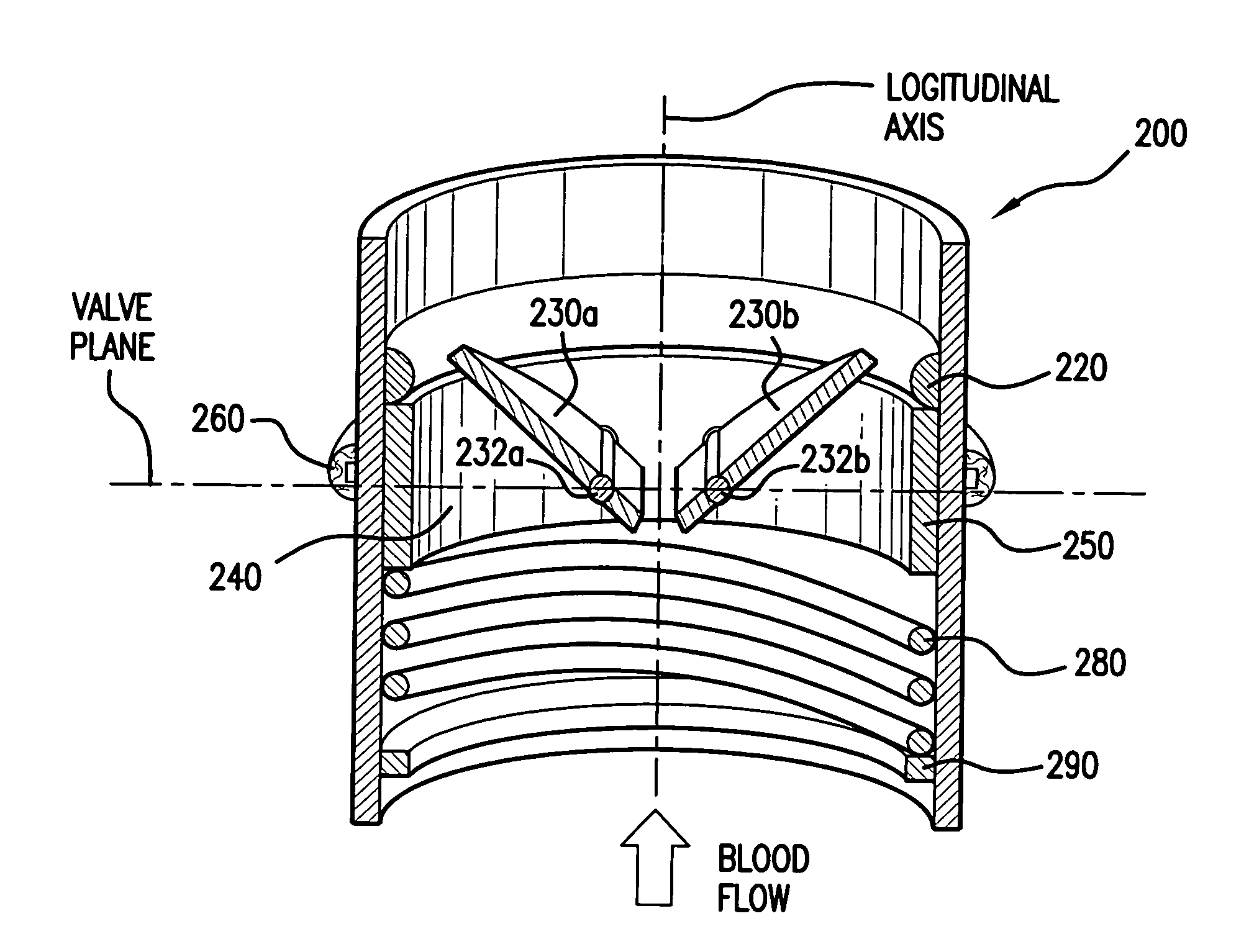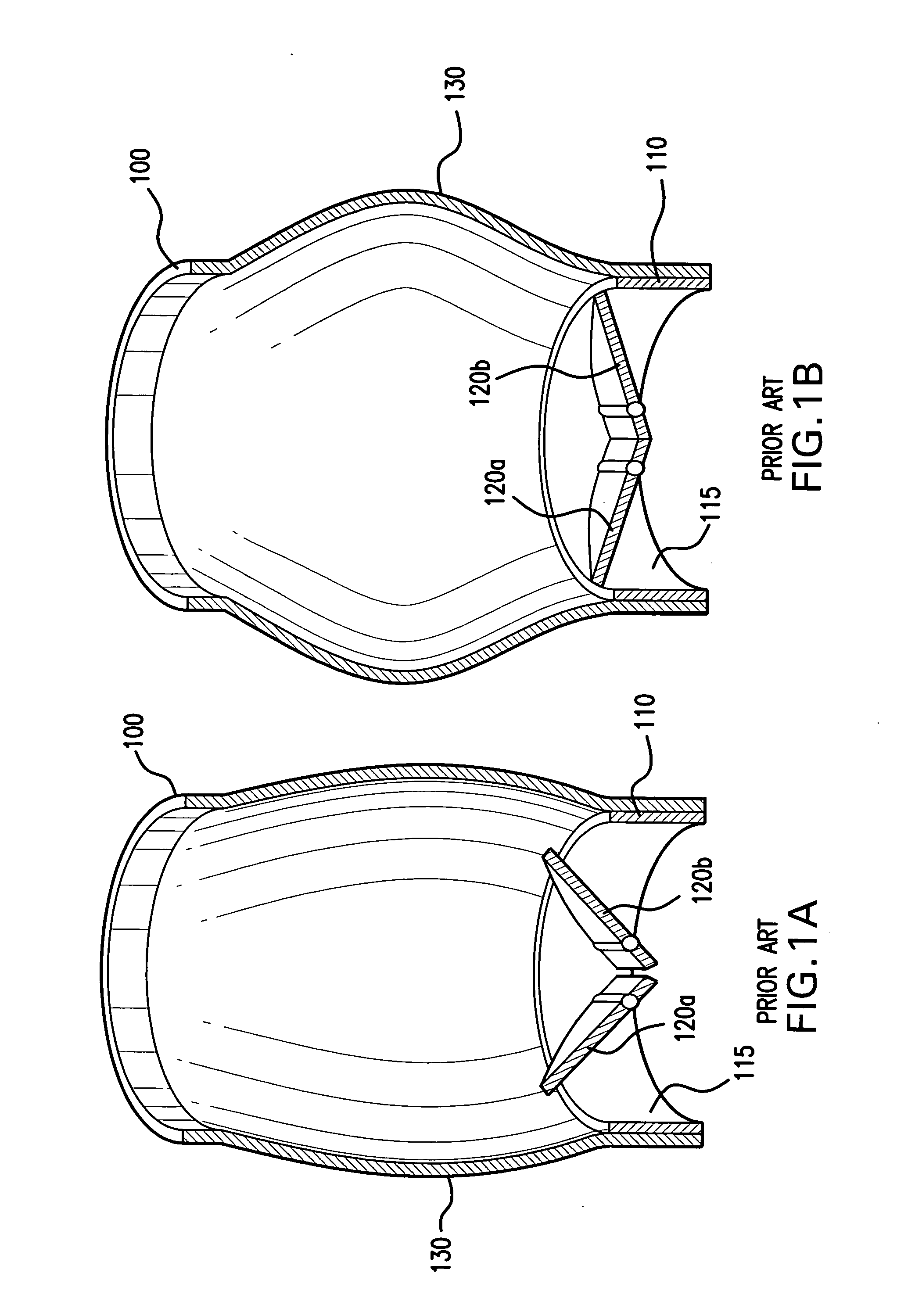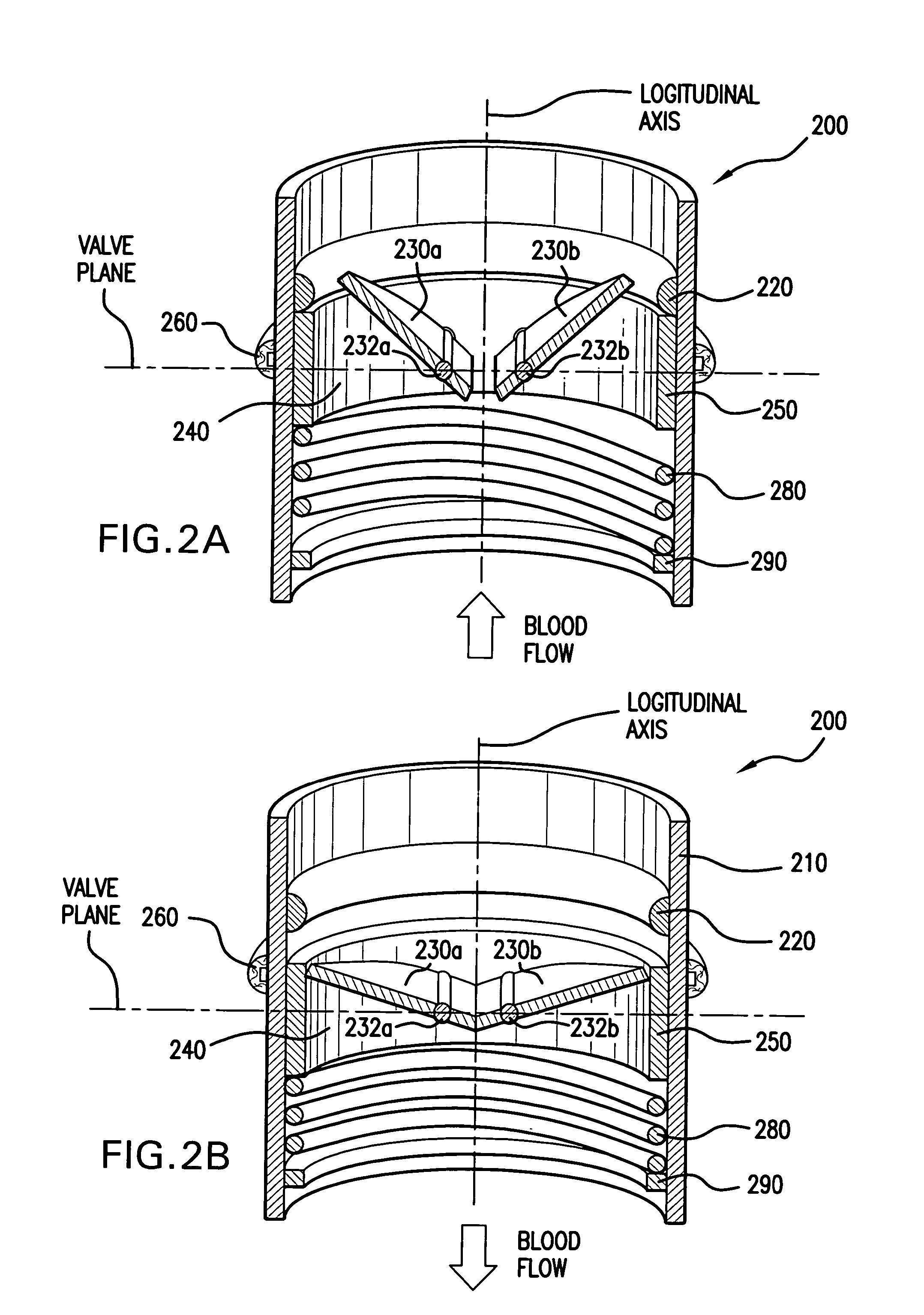Shock dampening biocompatible valve
a biocompatible valve and shock-dissipating technology, applied in the field of prosthetic valves, can solve the problems of mechanical valve noise, various problems and deficiencies, and the formation of potentially damaging blood clots in the recipient patient, and achieve the effect of discharging hydraulic shock energy
- Summary
- Abstract
- Description
- Claims
- Application Information
AI Technical Summary
Benefits of technology
Problems solved by technology
Method used
Image
Examples
Embodiment Construction
[0037] Various exemplary embodiments of the present invention will now be described in conjunction with the illustrations of the Drawings. It is to be understood that the Drawings are not scaled mechanical drawings, but are diagrams intended to show the combination of features which form the invention when embodied as depicted.
[0038] Referring to FIGS. 2A and 2B, there is shown in cross-section a biocompatible valve 200 operable in accordance with the invention. As is shown in the Figure, the valve 200 includes a mount 210 having a longitudinal axis along which blood flows. The mount 210 is affixable to the patient by affixing means, which may be any known means for affixing a replacement valve into a patient known in the art, such as by suture cuff 260. Additionally, the affixing means need not be located at the midpoint as shown in the Figure. In certain embodiments of the invention, the valve 200 will be formed into or make a part of an aortic graft in which case the suture cuff...
PUM
 Login to View More
Login to View More Abstract
Description
Claims
Application Information
 Login to View More
Login to View More - R&D
- Intellectual Property
- Life Sciences
- Materials
- Tech Scout
- Unparalleled Data Quality
- Higher Quality Content
- 60% Fewer Hallucinations
Browse by: Latest US Patents, China's latest patents, Technical Efficacy Thesaurus, Application Domain, Technology Topic, Popular Technical Reports.
© 2025 PatSnap. All rights reserved.Legal|Privacy policy|Modern Slavery Act Transparency Statement|Sitemap|About US| Contact US: help@patsnap.com



